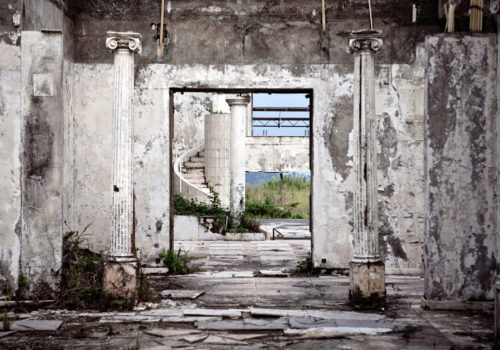Gwenn Dubourthoumieu is a Kinshasa based photojournalist where he has worked since 2007. He contributes regularly to the Agence France Presse, Jeune Afrique magazine, and several NGO’s. He is presenting his latest work about the “Palaces of Mobutu”.
Every Sunday, Mobutu prayed at the Saint-Marie-de-Miséricorde church where his first wife and three children were buried. Then he invited churchgoers to a meal at the palace. After the meal, he took out boxes of crisp new bills for everyone to share. I had never seen a man give away as much money as Mobutu! He was a great leader”. Seated at the table of the Nzekele motel in Gbadolite, in the northwestern region of the Congo Democratic Republic, Zoro Kenga, former butler at the Kawele palace, nostalgically remembers his years serving the former dictator of Zaïre.
With his close friends and family, and the foreign leaders that supported him, as with the residents of his childhood village, this billionaire president knew how to appear generous. Here he remains Maréchal Mobutu Sesse Seko, the “everlasting”.
In 1967, two years after his coup d’état, this Congolese army chief transformed the small villages where he was raised into a city with a giant infrastructure. A dam, a hydroelectric factory, an airport with the longest runway in Central Africa and three opulant palaces that grew amidst the African outback.
Fourteen years after the President’s departure, nothing remains of these constructions. Destroyed by the weather, overwhelmed by vegetation, devastated by robberies, the palaces of the supreme Guide are no more than mere skeletons devoid of their riches to the eyes of visitors.
Exhibition
From the 25th of March to the 25th of April
Comptoir Général 80 quai de Jemmapes
75010 Paris
















